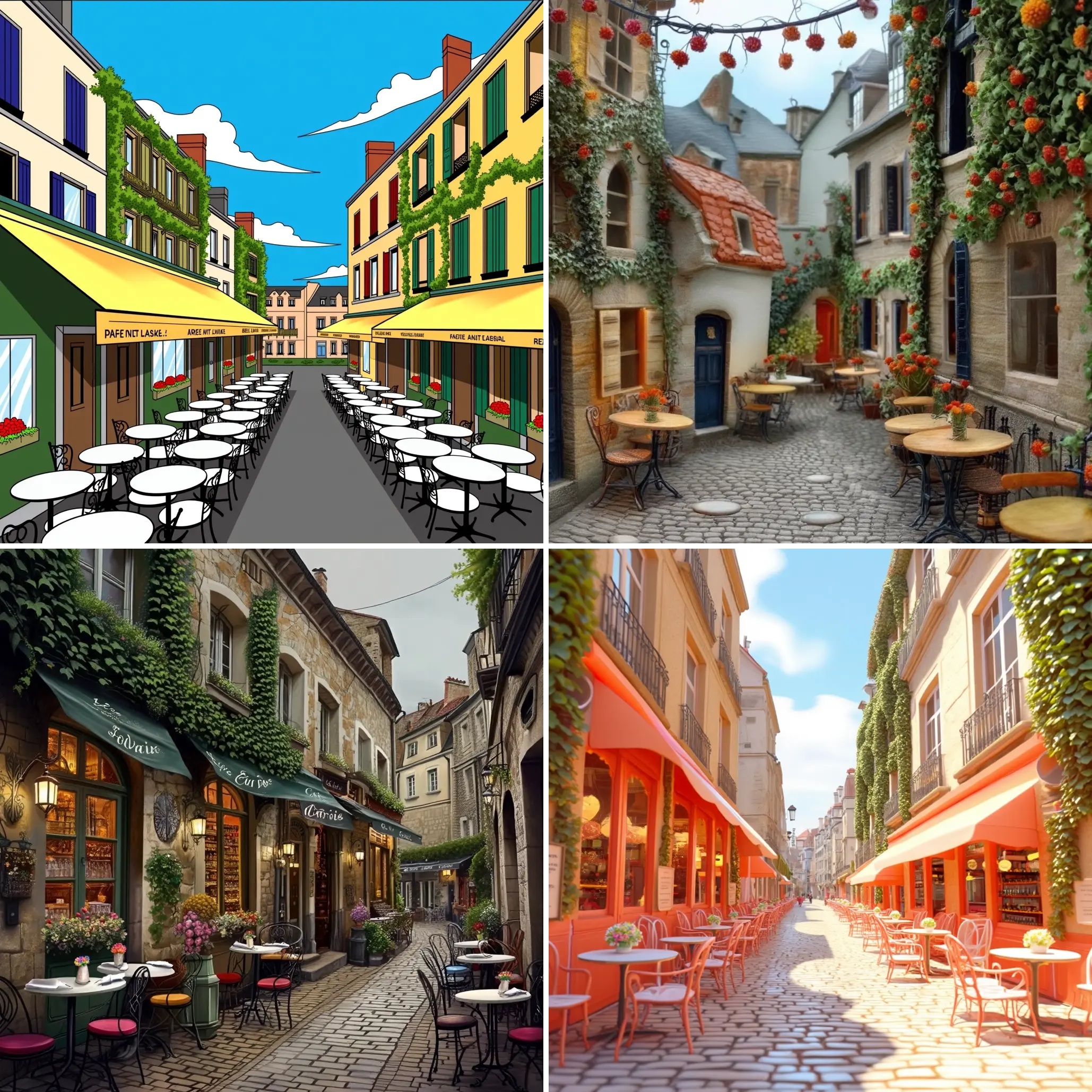ComfyUI Node: LM Studio Prompt (Mikey)
LMStudioPrompt
CategoryMikey/AI
bash-j (Account age: 4472days) Extension
Mikey Nodes Latest Updated
2025-03-22 Github Stars
0.14K
How to Install Mikey Nodes
Install this extension via the ComfyUI Manager by searching for Mikey Nodes- 1. Click the Manager button in the main menu
- 2. Select Custom Nodes Manager button
- 3. Enter Mikey Nodes in the search bar
Visit ComfyUI Online for ready-to-use ComfyUI environment
- Free trial available
- 16GB VRAM to 80GB VRAM GPU machines
- 400+ preloaded models/nodes
- Freedom to upload custom models/nodes
- 200+ ready-to-run workflows
- 100% private workspace with up to 200GB storage
- Dedicated Support
LM Studio Prompt (Mikey) Description
Process text prompts with LM Studio API, enhancing LoRA model integration for nuanced text-to-image generation.
LM Studio Prompt (Mikey):
The LMStudioPrompt node is designed to process text prompts using the LM Studio API, similar to the oobaprompt but with enhanced capabilities. This node is particularly useful for AI artists who want to integrate LoRA (Low-Rank Adaptation) models into their text prompts. By identifying and processing LoRA prompts embedded within the text, the node applies the specified LoRA models to the input, allowing for more nuanced and customized text-to-image generation. The primary goal of this node is to streamline the application of LoRA models, making it easier for you to achieve specific artistic effects without needing to manually handle the underlying technical details.
LM Studio Prompt (Mikey) Input Parameters:
model
This parameter represents the initial model that will be used for processing the text prompt. It is essential as it serves as the base model to which the LoRA modifications will be applied. The model should be compatible with the LM Studio API and capable of handling the specified LoRA prompts.
clip
The clip parameter refers to the CLIP (Contrastive Language-Image Pre-Training) model used in conjunction with the base model. This model helps in understanding and encoding the text prompts, ensuring that the LoRA modifications are applied correctly. The CLIP model should be pre-loaded and compatible with the base model.
text
The text parameter is the main input text prompt that you want to process. This text can include special LoRA syntax in the format <lora:filename:multiplier>, which the node will parse and apply to the model. The text should be well-formed and include any desired LoRA prompts for customization.
seed
The seed parameter is used to ensure reproducibility of the results. By providing a specific seed value, you can generate the same output for the same input text prompt, which is useful for fine-tuning and iterative design processes. The seed should be a numerical value.
extra_pnginfo
This optional parameter allows you to pass additional metadata or information that might be relevant for processing the text prompt. It can be used for advanced customization and fine-tuning of the output. If not needed, this parameter can be left as None.
prompt
The prompt parameter is another optional input that can be used to provide additional context or instructions for processing the text prompt. This can be useful for more complex scenarios where multiple layers of instructions are needed. If not required, this parameter can be left as None.
LM Studio Prompt (Mikey) Output Parameters:
model
The model output is the modified model after applying the specified LoRA prompts. This model can be used for further processing or directly for generating images based on the customized text prompt.
clip
The clip output is the modified CLIP model after applying the specified LoRA prompts. This ensures that the text encoding aligns with the modifications made to the base model, providing a coherent and consistent output.
stripped_text
The stripped_text output is the input text prompt with all LoRA syntax removed. This cleaned text can be useful for further processing or for generating metadata that does not include the LoRA instructions.
text
The text output is the original input text prompt, including any LoRA syntax. This is provided for reference and can be useful for debugging or for understanding the modifications made during processing.
LM Studio Prompt (Mikey) Usage Tips:
- Ensure that your text prompt includes the correct LoRA syntax in the format
<lora:filename:multiplier>to apply the desired LoRA models effectively. - Use the
seedparameter to maintain consistency across multiple runs, which is particularly useful for iterative design and fine-tuning. - If you have additional metadata or context, make use of the
extra_pnginfoandpromptparameters to provide a richer input for processing.
LM Studio Prompt (Mikey) Common Errors and Solutions:
Cannot execute because a node is missing the class_type property.
- Explanation: This error occurs when the input prompt is missing the
class_typeproperty, which is essential for identifying the type of node being processed. - Solution: Ensure that all input prompts include the
class_typeproperty with the correct value.
Cannot execute because node {class_type} does not exist.
- Explanation: This error indicates that the specified
class_typedoes not correspond to any known node. - Solution: Verify that the
class_typespecified in the input prompt is correct and corresponds to an existing node.
Prompt has no outputs
- Explanation: This error occurs when the input prompt does not produce any outputs, which means the processing cannot proceed.
- Solution: Ensure that your input prompt is correctly formatted and includes all necessary parameters to produce outputs.
LM Studio Prompt (Mikey) Related Nodes
RunComfy is the premier ComfyUI platform, offering ComfyUI online environment and services, along with ComfyUI workflows featuring stunning visuals. RunComfy also provides AI Playground, enabling artists to harness the latest AI tools to create incredible art.



